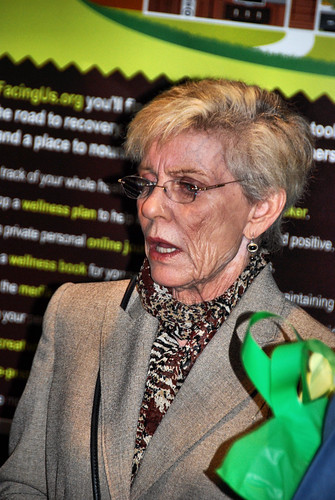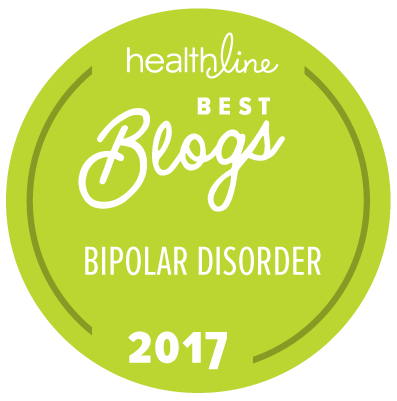Pax Nortona – A Blog by Joel Sax
From the Land of the Lost Blunderbuss
Home - Health - Mental Illness - Addictions - Notes on the 2011 DBSA National Conference Part 1
Notes on the 2011 DBSA National Conference Part 1
Posted on May 25, 2011 in Addictions Anxiety Bipolar Disorder DBSA Support Groups and Conferences Stigma Sugar and Fat Travel - Conferences
 The first big secret divulged to me and a select group of others was that the rumor that Peter Ashenden had been fired by [[Depression_and_Bipolar_Support_Alliance|DBSA]] after embezzling most of its assets ((Ashenden left because he was offered a job working for former DBSA head Sue Bergestrom at United Healthcare. The worst that can be said about him is that he sold out to Big Insurance.)) was not true. ((Thankfully I never spread this one. Nor is it true that our next conference is going to be in Hawaii.)) DBSA had worked itself into the red due to optimistic budgeting based on the assumption that the pharmaceuticals industry would continue its philanthropic support of its customer base. [[Abbott_Laboratories|Abbott]] — long a supporter of DBSA — left the psycho-pharmaceuticals field entirely. Money budgeted was based on what DBSA hoped to bring in. This led to $400,000 in payables in 2010. The board changed it method of budgeting to a zero-sum scheme meaning that you budgeted only the money left over at the end of the previous year. This meant a smaller operating fund — 44% of DBSA’s employees had to be phased out — but payables now stand at $20,000.
The first big secret divulged to me and a select group of others was that the rumor that Peter Ashenden had been fired by [[Depression_and_Bipolar_Support_Alliance|DBSA]] after embezzling most of its assets ((Ashenden left because he was offered a job working for former DBSA head Sue Bergestrom at United Healthcare. The worst that can be said about him is that he sold out to Big Insurance.)) was not true. ((Thankfully I never spread this one. Nor is it true that our next conference is going to be in Hawaii.)) DBSA had worked itself into the red due to optimistic budgeting based on the assumption that the pharmaceuticals industry would continue its philanthropic support of its customer base. [[Abbott_Laboratories|Abbott]] — long a supporter of DBSA — left the psycho-pharmaceuticals field entirely. Money budgeted was based on what DBSA hoped to bring in. This led to $400,000 in payables in 2010. The board changed it method of budgeting to a zero-sum scheme meaning that you budgeted only the money left over at the end of the previous year. This meant a smaller operating fund — 44% of DBSA’s employees had to be phased out — but payables now stand at $20,000.
“I have not given up my neuroses,” said keynote speaker [[Patty Duke]]. “I have given up my psychoses. I am just enough neurotic to make me interesting.”
Duke is a tiny, frail woman (at least as far as I can see), far in figure from the [[Helen Keller]] she played in [[The Miracle Worker]]. Nonetheless, she moved the crowd with her account of her life as a person living with bipolar disorder. “Our disability is not a label we wear,” she extolled. “I wear the label of ‘we can, we do.”
The most meaningful part of the talk for me was where she spoke of her life as a bipolar harridan who tormented her family. She confessed that “I, Patty Duke, was an abusive Mom.
It started with the verbal abuse. My children never knew who they were going to meet…These children united with each other. When I was diagnosed and treated, it took some time for them to trust me….I didn’t exhibit these behaviors at the workplace. I exhibited them as soon as I got in the car, as soon as I got on the car phone. I exhibited them on my family.
Many mothers stood up and confessed to similar predicaments. The men were silent, but I think they knew what she was talking about, too. I, for one, resisted having children in part because I feared my rages. In the 23 years of our marriage, I have never hit or threatened to hit Lynn, even though my disorder seethed and overflowed. I attempted to break keyboards over my knee. I punched the wall. Still, I realized how easily the still hand could turn to a slap across the face. When you united them, they could push and a child is so small. Little bones encased in the slightest sack of skin and flesh could be broken like this. I feared the big man who could hurt. But now, I look at the long loneliness ahead. Other people my age already have grandchildren and children in college. What bonds can I form with my peers? My disorder and my consciousness of it have cost me life.
Near the end of her talk, Duke said “Our disease used to be a death sentence.” It still remains a prison cell for some of us.
I started overeating after I surrendered my previous tension-cutting activity which was to chew on a pen and roll it around between my incisors. This not only wore down the teeth, but also ground a roundish hole. You could place any writing implement there and see the fit. I had to give this up because I started taking my oral health seriously. My dentist said the habit — along with my routine failure to brush — had to cease. So my nerves led me to substitute food as the all-natural anti-anxiety drug of choice.
Linda Chase LCSW said that it was all in the hands. She observed that the victims of emotional eating were people who moved their hands toward food even when not physically hungry. It was compulsive and uncontrollable, a self-destructive attempt at self-help. Serious eating disorders may result from it, but it can be overcome through treatment.
People do it for pretty much the same reasons — save one — that I chewed on my pens. It comforts, sooths, nurtures, numbs, sedates, and distracts. Through the extra-sized burger on your plate, you can escape painful emotions. Tension, anger, or frustration can be discharged by the rhythmic motions of your jaw. Some people reported that the comfort came from the larger body size they attained as a result. People feared you or they did not desire you sexually. ((This could also be true of someone with bad teeth as I had.)) Intimacy could be avoided.
There’s a cycle that we emotional eaters follow. First comes the cultural body ideal which suggests that you need to have the same svelte figure that you had at age 20. As fatty tissue accumulates with age — as it does for all of us — we panic. We label our big butts or our guts as ugly. So we resort to extreme diets that approach our former selves. But this is like putting ourselves in prison. Locked away and tortured by a life in which we allow ourselves not even a single chocolate chip cookie, we go stark-raving mad. Then we find ourselves in a store buying up our comfort foods and we eat them — all at once! This destroys any good and any anorexia ((Not every objective of a starvation regime is positive)) our diet may have accomplished. We look at our recently refattened bodies and feel guilt, shame, depression, and anxiety. So to escape these, we overeat some more until we look at ourselves again, measure our bodies against ridiculous cultural ideals, and return to our prisons. Each time this happens, we gain and lose more weight than before.
95 to 98% of who experience this drastic cycle gain all the weight back plus more. What we don’t realize is that there are happy and unhappy people in all sizes. True we should eat healthily, but do we need to excise chocolate chip cookies entirely from our lives? Do we need to exercise every day, eschewing every other activity that gives us pleasure until we feel like rats on a wheel? It is healthier to be large and fit than to be thin and unfit.
I liked some of her suggestions: First, seek a stable weight. I am aiming for 220 pounds rather than the 180 pounds of my youth for example, and when I get there, I will do what restraint and what necessary eating to stay in that region. Second, avoid yo-yo diets. Chase does not endorse radical surgeries for controlling your weight mostly because it does not address the emotional eating issues. She also warns us to be aware that some medications cause us to gain weight and require that we guard ourselves against entering a diet/binge cycle in an attempt to control it. Third, eat when you are hungry and eat what you want. This requires that you learn to recognize true hunger as opposed to emotional gratification. Successful challengers of emotional eating stock the foods that they occasionally love. Instead of turning your kitchen into a desert island, have those chocolate chip cookies around. I am diabetic. But I keep my favorite foods around, marking very carefully how much of each I eat and not eating too much of anything. Fourth, love your body as it is when it gets fit. Be nurturing towards yourself so that you don’t stampede into bad eating habits. Exercise in ways that give you pleasure. ((I love to plug in my Droid and listen to music when I get on the treadmill. Losing myself in the music helps me move on.))
Cheese pursued me everywhere. It arrived on the table in the Southwestern-style lasagna the hotel served for lunch during the Chapter Leadership Forum. It lurked on the pizza they served for those who went to the Friday night focus group. It lay in wait on the sandwiches they served for lunch on the main day of the conference. The hotel staff spared me the suffering a migraine or starvation by bringing me steamed vegetables on the first day’s lunch. I skipped the pizza and ate a salad rich in pickled peppers. During the second day’s lunch, I stripped the mozzarella from the turkey and passed it over to my friend Chato. The others at my table assumed that I was lactose-intolerant. I explained that I could drink milk, spoon up yogurt, and enjoy the cheesecake they brought for dessert. The [[tyramine|tyramines]], I explained, were what spoiled my equanimity. No one had a clue what those were.
Charles Willis got me to thinking about how a child is a captive audience who often does not get a chance to learn how to establish boundaries for her or himself. Parents can insist that their opinions reign supreme and that the child must internalize them. This can be the source of much misery later in life. And I will define this destruction of boundaries as one of the hallmarks of abusive parenting.
I think that abusive parents destroy boundaries because they, themselves, have trouble having them. They feel impelled to reach out and encompass their children. In the abusive family, the members are not allowed to accept their condition — they must drop the walls and be their condition as the hierarchs of the family define it.
I told one mother who was worried that her depressed sons would end up as failures that I personally had been sucked down by such thinking in my parents. I was told not to seek care for my illness. My family members worried that they would somehow be accused of doing what they did (of all things!) It meant the ruin of my life. I’m not sure Willis understood where I was coming from, but that is what issued forth.
The key to recovery is to acknowledge feelings and exert choice in how we respond. We may not be able to control our triggers, but we can plan for them. I can agree with this.
To be continued.


